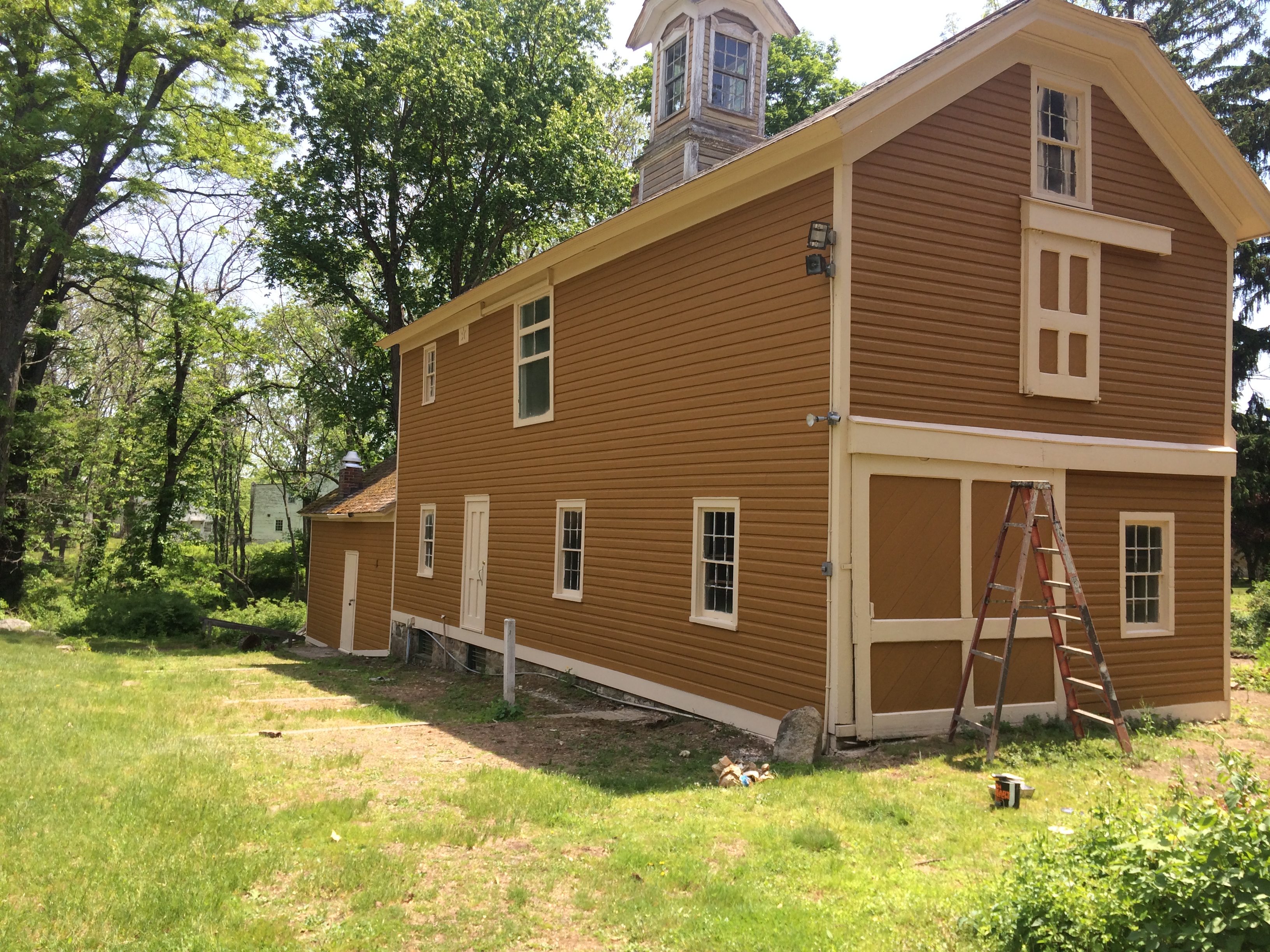Honoring Garden State Heritage Through Meticulous Restoration
New Jersey is rich with history, from colonial-era farmhouses in Monmouth County to grand Victorian mansions in Cape May. These structures are more than just buildings; they are tangible links to our past. Preserving their integrity requires a specialized approach, especially when it comes to their protective and aesthetic coatings. Historic painting is not merely applying a new coat of paint; it’s a craft that blends historical accuracy with modern technology to protect and beautify these architectural treasures for generations to come.
Property managers, developers, and homeowners entrusted with the care of historic buildings in New Jersey face a unique set of challenges. The goal is to restore, not replace, maintaining the original character while ensuring long-term durability. This requires a deep understanding of historical materials, architectural styles, and the specific environmental demands of the Garden State.
Why Historic Painting Requires a Specialist
Painting a historic property is fundamentally different from a standard residential or commercial project. The stakes are higher, and the process is far more complex. A successful historic restoration project hinges on several key factors that only a seasoned professional can navigate effectively.
Material and Surface Analysis
Older buildings were constructed with materials that are often no longer in common use, like horsehair plaster, hand-hewn wood, and early forms of metal. Furthermore, decades or even centuries of previous paint layers can hide underlying issues. A critical first step is identifying the original substrate and the composition of existing paint, which may contain lead. A lead-safe certified contractor is essential for handling such materials safely and in compliance with regulations.
Historical Color Accuracy
Choosing the right color is paramount. Historic color palettes were often derived from natural pigments and evolved significantly over time. A specialist in historic restoration painting will work with conservators or use methods like paint forensics to uncover the original color schemes, ensuring the final result is authentic to the building’s period.
Painstaking Preparation
The longevity of any paint job depends on preparation, and this is doubly true for historic structures. Years of weathering can cause peeling, cracking, and moisture damage. Proper preparation may involve delicate techniques to remove failing paint without damaging the historic substrate beneath. Services like professional sandblasting can be employed for certain materials, but they must be executed with precision to avoid harming irreplaceable architectural details.
Did You Know?
New Jersey’s Rich History
New Jersey has over 1,600 listings on the National Register of Historic Places, showcasing a diverse range of architectural styles from the 17th century to the 20th century.
The Role of Paint
In the 18th and 19th centuries, paint was not just for looks; it was a crucial preservative, protecting wood from rot and moisture. The choice of color often signified wealth and status.
State-Level Recognition
Many historic properties in New Jersey are also on the New Jersey Register of Historic Places, which requires adherence to specific preservation standards, particularly for projects involving work on state-registered properties.
The Historic Painting Process: A Step-by-Step Approach
A meticulous process ensures a restoration that is both beautiful and enduring. While every project is unique, a professional approach generally follows these steps.
1. Comprehensive Assessment and Consultation
The project begins with a thorough inspection of the property. This includes evaluating the condition of all surfaces, identifying necessary repairs, and discussing the historical goals with the property owner. It’s a partnership between the contractor and the client.
2. Surface Preparation and Repair
This is the most labor-intensive phase. It involves carefully cleaning surfaces, removing loose and failing paint, and performing necessary repairs to wood, plaster, or metalwork. For metal elements like fences or railings, electrostatic painting can provide a durable, factory-like finish after proper preparation.
3. Priming with Appropriate Materials
Applying the right primer is crucial for adhesion and durability. The type of primer will depend on the substrate (e.g., wood, masonry, metal) and the type of topcoat being used. A high-quality primer seals the surface and provides a uniform base for the paint.
4. Application of Historically Accurate Coatings
Using premium-quality paints formulated for historic applications, skilled painters apply the finish coats. This requires precision and attention to detail, especially when working with intricate trim, windows, and architectural features. The goal is a flawless finish that respects the building’s original aesthetic.
5. Final Inspection and Clean-Up
A final walkthrough with the client ensures every detail meets their satisfaction. The work site is left immaculate, with the property’s historic charm fully restored and protected.
The Tinton Falls & New Jersey Climate Factor
Historic properties in Tinton Falls and across New Jersey endure a challenging climate—hot, humid summers and cold, wet winters. This freeze-thaw cycle is particularly harsh on older building materials. Moisture penetration is a primary enemy, leading to paint failure, rot, and structural damage. Any residential or commercial painting project on a historic building must prioritize waterproofing and moisture management. This includes using breathable paints that allow trapped moisture to escape while preventing external water from getting in, as well as ensuring gutters, flashing, and caulking are in perfect condition.
Trust Your Legacy to the Experts
For over three decades, Spectra Painting has been the trusted partner for historic restoration projects throughout New Jersey. We combine deep respect for history with advanced painting solutions to preserve our state’s architectural heritage. Let us help you protect and enhance your historic property.
Frequently Asked Questions About Historic Painting
How do you determine the original color of a historic building?
Professionals use a combination of methods. This can include careful scraping and sanding to reveal underlying layers (paint archaeology) or taking small samples for laboratory analysis. Historical documents, photographs, and consultation with preservation societies can also provide valuable clues.
My historic house has lead paint. What should I do?
Do not attempt to remove it yourself. Lead paint can be hazardous if disturbed improperly. It’s crucial to hire a contractor who is EPA Lead-Safe Certified. They are trained in safe removal, containment, and disposal practices to protect you, your family, and the environment.
Can modern paints be used on a historic home?
Yes, and in many cases, they are superior. Modern paint technology offers enhanced durability, flexibility, and color retention. The key is choosing the right type of modern paint. For example, breathable acrylic latex paints are often a better choice for historic wood than oil-based paints, as they allow moisture to escape, preventing peeling and blistering.
How often should a historic property in New Jersey be repainted?
With high-quality materials and expert preparation and application, a paint job on a historic building can last 10-15 years or even longer. Regular inspections and minor touch-ups can significantly extend its lifespan by addressing small issues before they become major problems.
Glossary of Terms
Substrate: The original surface material underneath any paint or coating, such as wood, plaster, brick, or metal.
Electrostatic Painting: A painting method where paint particles are given an electric charge, causing them to be drawn to a grounded metal surface. This creates a smooth, durable, factory-like finish with minimal overspray.
Historic Conservator: A professional who specializes in the scientific preservation of historic objects and artifacts, including architectural elements and finishes.
Paint Forensics / Archaeology: The process of scientifically analyzing layers of paint on a historic structure to determine its original colors and finish history.
Waterproofing: The process of making a surface or structure impervious to water. In painting, this involves using specialized coatings and sealants to protect the substrate from moisture damage.






